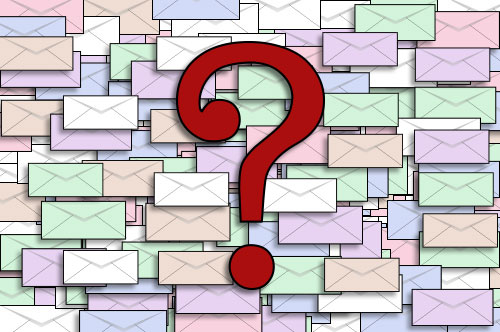A few months back, computer maven David Pogue wrote an article about finally getting over the fear of clicking the “Unsubscribe” button. “[T]he rule, for 15 years, has been: Never respond. Don’t even try to unsubscribe,” he wrote. “…You’ll wind up getting put on even more spam lists as a result.”
Pogue is one of the smartest journalists in the technology field. The fact that he would think that responding to an unsubscribe link might cause you to get more email just goes to show how pervasive this myth is. And make no mistake about it: it is a myth.
Just to make it clear, I’m not talking about the obviously questionable messages that continue to fill our junk folders every day. There is no profit in sending any kind of message back to someone who is trying to sell you Viagra or nude pictures of Russian models. You shouldn’t respond to one of these anymore than you should engage in conversation with the guy selling “Rolex” watches on the street. I’m talking about the email you receive as the result of some online action, be that purchasing a laptop, or signing up to receive a whitepaper. Painting these emails with the same broad strokes does a disservice to them, and, in the era of the CAN-SPAM Act, is patently wrong.
The story started in the early days of email, when, every time you tried to unsubscribe from an email, twenty more unwanted emails showed up in your inbox. “Don’t ask to be removed from a junk-mail list,” wrote Amy Harmon in the New York Times back in 1998. “…Some of them may actually remove you. But many more appear to simply take the reply as confirmation that they can continue to reach you there.” Ms. Harmon doesn’t really explain what she means by “junk-mail list,” nor does she attempt to distinguish between legitimate business email (those ones that honored the request to be removed from a list, I suspect), and the spammers. Back then, unsubscribes were accomplished by replying with “unsubscribe” in the subject line. While there may be a few legitimate businesses that still handle unsubscribes in this fashion—although, frankly, I’d be suspicious of any that do—most email marketing today uses an unsubscribe link that takes you to a page where you can opt to stop receiving email from that source.
The different email marketing service providers handle unsubscribes in their own ways. Some require a double opt-out. As a rule, we don’t recommend this technique. A double opt-in is put in place to make sure the recipient really wants to receive that email from you and the recipient knows it. A double opt-out, on the other hand, is seen as a nuisance, and actually may qualify as a violation of the CAN-SPAM Act. Others require the recipient to re-enter their information, even though all of this information could easily be included in the link. Some go to the other extreme, automating the entire unsubscribe process so that clicking the link is all it takes. We don’t recommend this approach either. It is too easy to accidentally unsubscribe, and people might not bother resubscribing after that. The best approach is to take the recipient to an email page where they can unsubscribe with one click. If they accidentally clicked the link (or, the person to whom they forwarded the email clicked it in error), they have the opportunity to leave the page without changing anything. Some sites includes short surveys to help them understand the cause of the unsubscribe. This is fine as long as it is optional. Force a recipient to wade through a survey and they will simply go back to their inbox and mark that email as spam.
In 2003, the CAN-SPAM Act made it a law that clicking on those unsubscribe links will actually do what they say, and yet, the Unsubscribe Myth persists. Many people will tag email as spam—even though they agreed to receive it—simply to stop getting it. There is a misperception that tagging an email as junk is a better way to stop receiving unwanted email than clicking the unsubscribe link; that somehow this bypasses notifying the sender. If that were true, it would be very easy for anyone to scuttle another company’s email efforts with just a few clicks. If a recipient tags an email as spam, any ESP worth its salt will know about it immediately and will take steps to ensure that that this doesn’t affect a company’s email deliverability. Nonetheless, clicking Unsubscribe is still the preferred way to eliminate email you no longer want. Flagging an email as spam if best done only if the sender doesn’t respect an unsubscribe request. It’s nice to see that David Pogue finally realizes this. Hopefully, others will follow.

